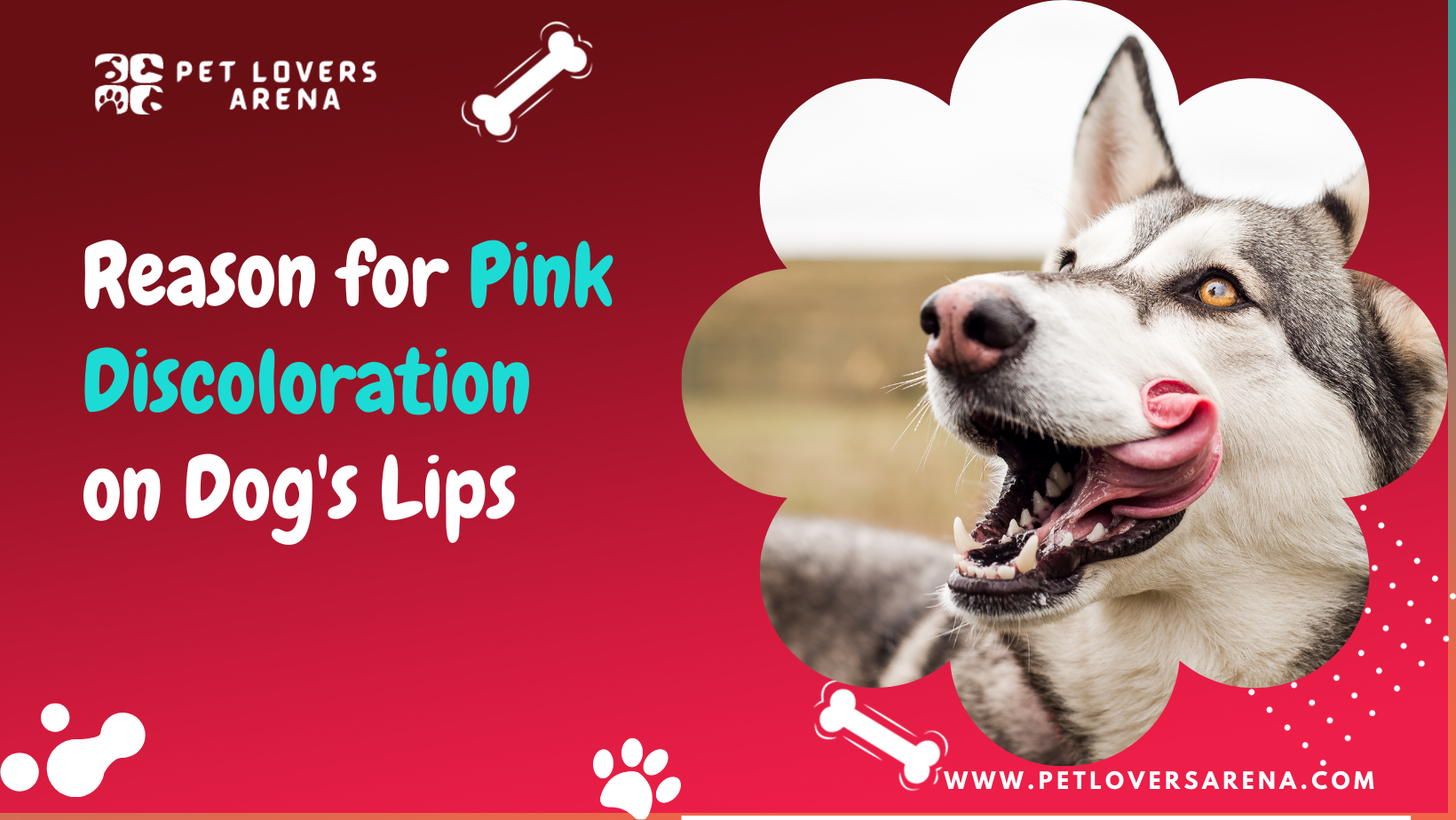Were you playing with your dog when you noticed his lips turning pink?
It is common to see some dark or light patches on your dog’s skin until it is completely white. Sometimes it can be lighter in one place and darker in others, but after a while, it will regain its color, and this can be due to various reasons, the foremost being weather changes. Just like human faces change in skin color during summer and winter alternatively, human skin can turn light in winter and dark in summer; similar changes are visible in dogs.
So even if you see discoloration on your dog’s lips, you do not need to panic unless and until there are some other abnormal changes too. If you only notice a normal discoloration and no other harmful symptoms, don’t worry; otherwise, see a veterinarian right away in case of major issues.
However, there are many reasons for the discoloration of the lips of dogs. It can be harmless or maybe a symptom of some disease. So let’s peep inside to learn more about this discoloration of a dog’s lips.
Why is There Pink Discoloration on the Lips in Dogs?
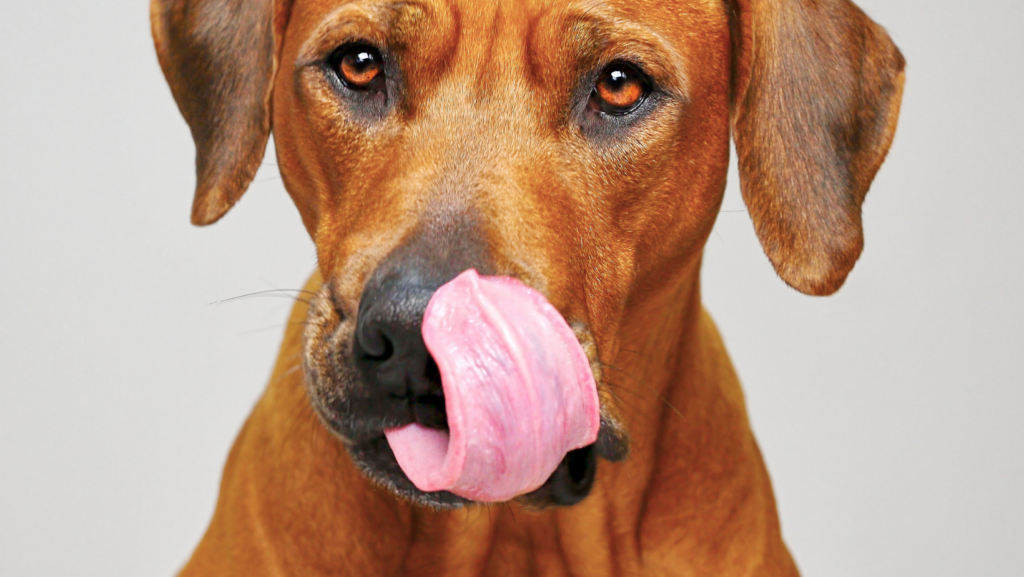
Pink discoloration on the dog’s lips is a slow process. There can be many possible reasons for the discoloration of their lips. Read below to have a look at some major issues.
1. Impetigo
It is a skin infection caused by unhygienic conditions, thus resulting in discoloration of the lips in dogs. A common cosmetic disease that does not include inflammation, swelling, or other such symptoms. Impetigo can simultaneously discolor the upper lip, lower lip, or both lips.
Impetigo in dogs sometimes comes in combination with bumps filled with pus, small bumps that are raised, and sometimes excessive irritation. You can notice your dog immensely scratching that particular area.
- Causes
There is no actual cause of impetigo in dogs. However, an autoimmune disease in dogs, unusual skin damage or problems in their endocrine system can lead to impetigo in dogs.
If not any of the above causes, then it can be due to: bacteria, insect bite, food allergy, flea infestation, or in some cases, ringworms on their skin.
- Treatment of Impetigo
The dog suffering from impetigo may regain their lip color back shortly, or their lips will remain colorless throughout their life. However, it is harmless, and dogs can easily survive with this condition.
Make use of Chlorhexidine or benzoyl peroxide on your dog two times a day. If you observe inflammation, swollen lips, or wounded lips, besides their losing color, it can signify a serious illness.
2. Porphyrin
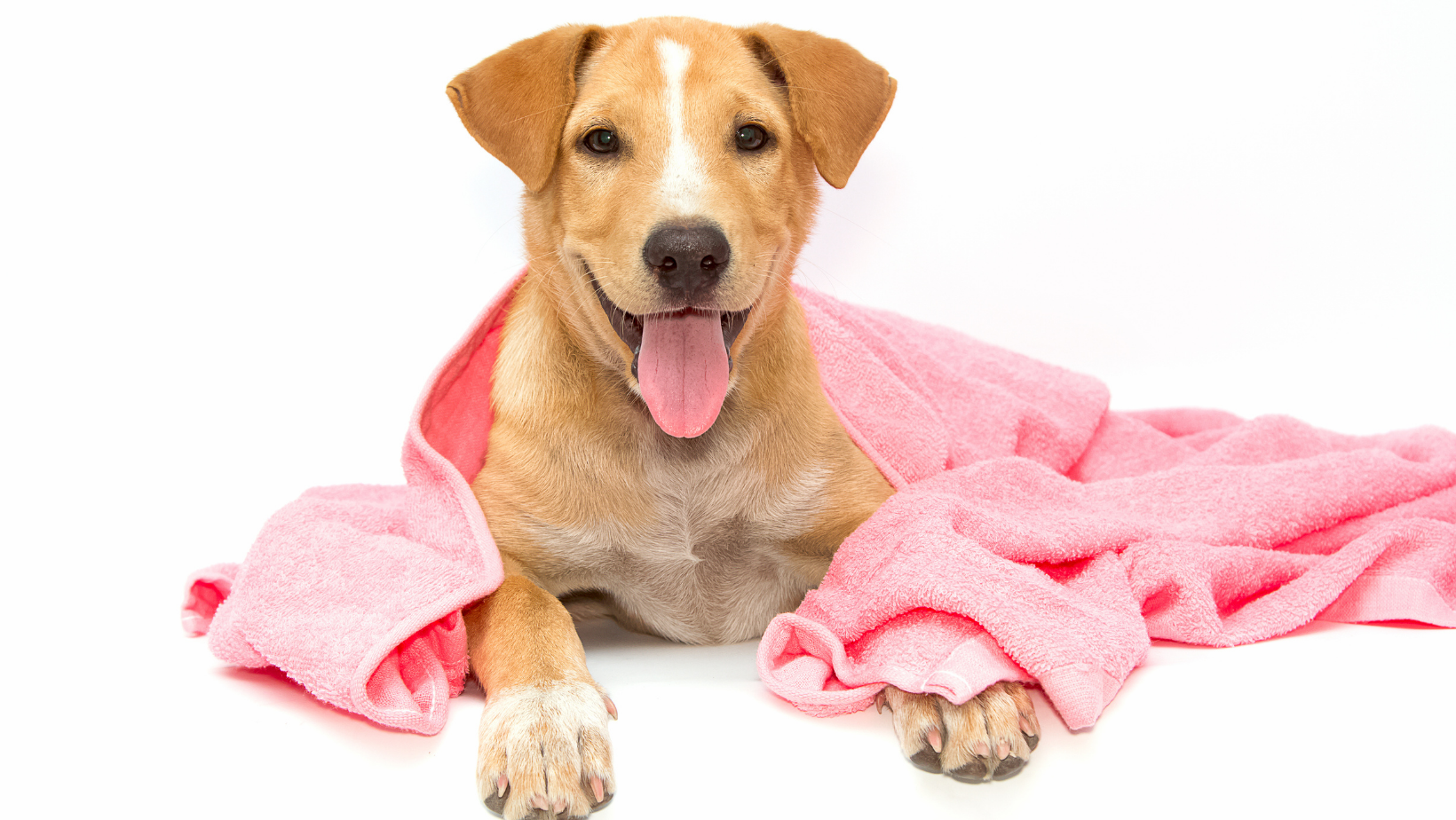
It is a natural substance found in tears and saliva. Porphyrin tends to turn the skin pink or brown. If your dog has cried a lot or has produced saliva in a large amount, then their lips can get pigmented, i.e., turn pink in color.
- Causes
There can be a lot of reasons why your dog has cried or salivated in large amounts. Some of the reasons for excess salivation can be dental diseases, allergies, cysts in the mouth, stress, or other mouth disorders.
- Treatment of Lip Discoloration Caused by Porphyrin
You need to keep the affected area clean. For cleaning the infected area, it is advisable to use hydrogen peroxide and water in a 1:2 ratio, respectively. Let the area where you have applied the mixture dry, and then apply apple cider vinegar. Leave it for a while and rub it gently.
3. Dental Diseases
The most common dental disease in dogs are build up of plaque and tartar on the teeth. Animals such as dogs or cats nearly 3–4 years old develop plaque and bacteria in their mouths.
- Causes
The buildup of bacteria in dogs’ mouths gradually leads to conditions, such as gingivitis and periodontal disease, which are gum inflammation and tooth loss, respectively. Firstly, in gingivitis, due to inflammation of gums, their bodies start producing a lot of saliva as a response, which serves as a temporary relief to the gums. And in the second condition, periodontal disease, dogs will require a lot of saliva to masticate food inside their mouths due to tooth loss. Again, this will lead to the excess production of saliva.
When the amount of saliva exceeds the normal amount, due to the presence of porphyrin, it starts dripping out of it, which when it touches the fur or lips repeatedly leads to discoloration of that area.
- Treatment of Dental Diseases
For the treatment of dental disease in dogs, consider the following advice:
- A proper antibiotic course for treating the bacterial infection.
- For temporary relief, use pain relief sprays or medicines suggested by the veterinarian.
- Make your dog follow a proper dental care plan as suggested by the veterinarian.
- For the treatment of tooth loss, performing proper dental surgery is necessary.
- Since plaque is the main reason for most infections, follow a proper diet plan for your dog to reduce the excess buildup of plaque.
- Make efforts to keep the mouth of your pet healthy. For that, you can make use of toothbrushes or dental chews, whatever seems more convenient.
- Make sure your dog has a proper checkup from the veterinarian. Keep it regular, like weekly or monthly, as suggested by the veterinarian.
4. Cyst Formation in the Mouth

The cysts formation in your dog’s mouth will make it feel excess irritation in the mouth. This annoyance can also affect your dog’s behavior. For example, your dog may cry due to excess pain in the mouth and get irritated most of the time.
- Causes
There is an excess saliva formation in the mouth caused due to cyst formation. The excessive amount of saliva thus formed starts dribbling out, causing pigmentation of the lips and discoloration of the skin coat. Due to the cyst inside the mouth, there will be excess saliva production in dogs. In addition, due to excess tear flow from their eyes, there can also be discoloration of the face.
- Treatment of a Cyst in a Dog’s Mouth
The treatment of cysts is normally oral surgery. The complications of surgery depend upon the size of the growing cyst. If the cyst is small, it can get removed easily, and the surgery is less painful than removing a large-sized cyst. A large-sized cyst will be more complicated and take more time to perform the surgery and its healing process.
Besides this, ensure proper care during the surgical process that removes the cyst. If the cyst’s lining remains as it is, or even if a part of the cyst is left, it will lead to the formation of cysts again.
5. Inflammation of the Gum Flaps
In dogs, the gums need to be healthy to maintain proper oral health. Inflammation of gum flaps is common to dogs that do not have proper upkeep.
- Causes
Some dogs have a condition where gum tissue starts to grow over the gums surrounding the teeth. These tissues form a flap-like or pocket-like structure known as a gum flap. This gum flap is normal in dogs such as Cavalier Kings. However, food particles may get stuck in these flaps, and not cleaning these particles will accumulate food particles or debris in large numbers in these flaps. With time, this will lead to inflammation. As a result, there will be increased saliva production in dogs.
- Treatment of Gum Flap Inflammation
Treatment of glum flaps is easy. But, first, you need to have healthy hygienic habits for your dog to follow daily.
- Use antibiotics for treatment and ensure that the dog follows a proper course of antibiotics.
- Clean the affected area regularly. Use a soft toothbrush here, or use dental chews for cleaning purposes.
- The owner can use pain relief gels or medicines to relieve inflammation and pain. If the cases are extreme, it becomes necessary to follow a proper surgical procedure after consulting with your dog’s veterinarian.
6. Allergies
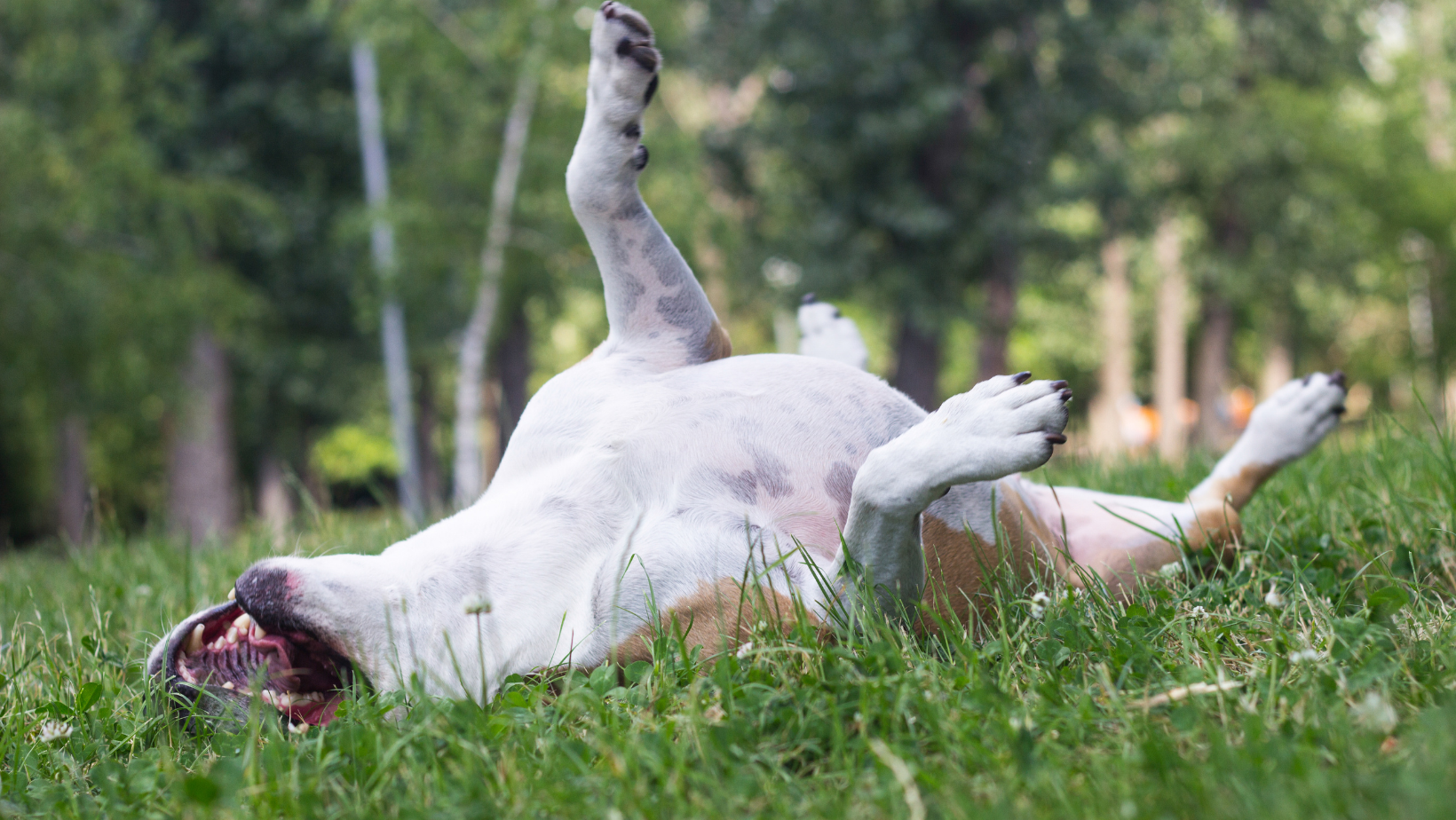
One of the most common causes of discoloration or depigmentation of the skin or lips of a dog is allergies. The discoloration caused due to allergies will be accompanied by inflammation, hardening of that region, and swelling.
- Causes
Allergies can be from food, pollens, certain chemicals, etc. There can be several causes for allergies, such as a sudden change in the weather. For example, just like humans, some dogs are allergic to pollen, which can occur at any time of the year.
If you have changed your dog’s diet or made other changes to their daily routine, like changing their daily used products, there are high chances that your dog is allergic to the new things you are using.
Sometimes, while moving outside in the park or on the street, they pick up something they are allergic to, which results in skin discoloration.
- Treatment for Allergies
If it is seasonal or due to a change in weather, then it will go away naturally. You need to rest.
If it is due to a change in their diet or other products, first observe the changes you made and then try to replace them with some other good products that do not use the same compounds for their preparation.
In all, try to avoid things that are the reason behind the allergy in dogs.
7. Infection
Dogs have the habit of sniffling all around wherever they go, whether in a park, at home, or anywhere else, and sometimes they tend to pick up a random thing in their mouth that we are not aware of. As much as it sounds exciting, this can be dangerous for them.
Picking up random objects from parks and homes can lead to serious infections, which can lead to the development of serious health conditions.
- Causes
Most of the time, the items they pick up are unsanitary, and it can sometimes result in a serious infection in their bodies. These infections can be deadly and cause swelling and inflammation throughout the body.
- Treatment
You need to immediately contact your dog’s veterinarian if it has developed some infection. It is better to detect and treat it early rather than unnecessarily delay it.
8. Wound Formation
The common cause of discoloration of the skin or lips of your dog is if they get any wounds. For fighting dogs, it could be their military work, a natural disaster, or being attacked by other dogs.For example, during play, they may lick their paws or lips from time to time, or sometimes they can bite them.
- Causes
Their biting and chewing with sharp teeth will lead to wound formation, leading to discoloration of that particular area, and at extreme times these wounds become a tumor. Most of the time, the tumor identified in dogs is malignant, i.e., a cancerous tumor that spreads throughout the dog’s body.
The symptoms start with discoloration of the nose and lips, and as cancer travels throughout the body, there is discoloration of other parts of the dog’s body. Unfortunately, it sometimes takes a lot of time to realize that your dog is suffering from cancer, resulting in the unfortunate death of the dog.
- Treatment
You need to ensure that infection doesn’t spread through that wound in the dog’s body.
Once the wound has healed, the affected area will sometimes get back to its original color.
The dog’s owner should immediately contact their veterinarian if they notice discoloration on their dog’s lips or other body parts. The veterinarian will ask you some questions regarding your dog’s health and other conditions. Make sure you guide the doctor properly with all the problems your dog is facing.
9. Vitiligo
Vitiligo in dogs leads to loss of pigmentation on the dog’s skin or lips. Your dog may develop patches all over his skin, which can occur at any age. Vitiligo is a normal cosmetic disease.
This vitiligo can be a reason for pink lips. If your dog is not always doing something harmful but doesn’t fit into any category mentioned above, then there are high chances that your dog will suffer from vitiligo. Vitiligo is normal, and if your dog has this, you should not get tensed much but consider seeing the veterinarian once.
- Causes
Vitiligo is a common cosmetic disease in dogs; there is no known cause, but most cynologists believe age is a factor in vitiligo in dogs.
- Treatment
In medical science, no treatment for vitiligo is there. So we can wait for the whole skin color to change and then let your dog’s skin turn back to normal.
As such, there has been no treatment of vitiligo observed up to date, except the use of some cosmetic and other dog products that can alter or change the skin tone or discoloration temporarily.
Discoloration Of The Lips That May Be Harmless
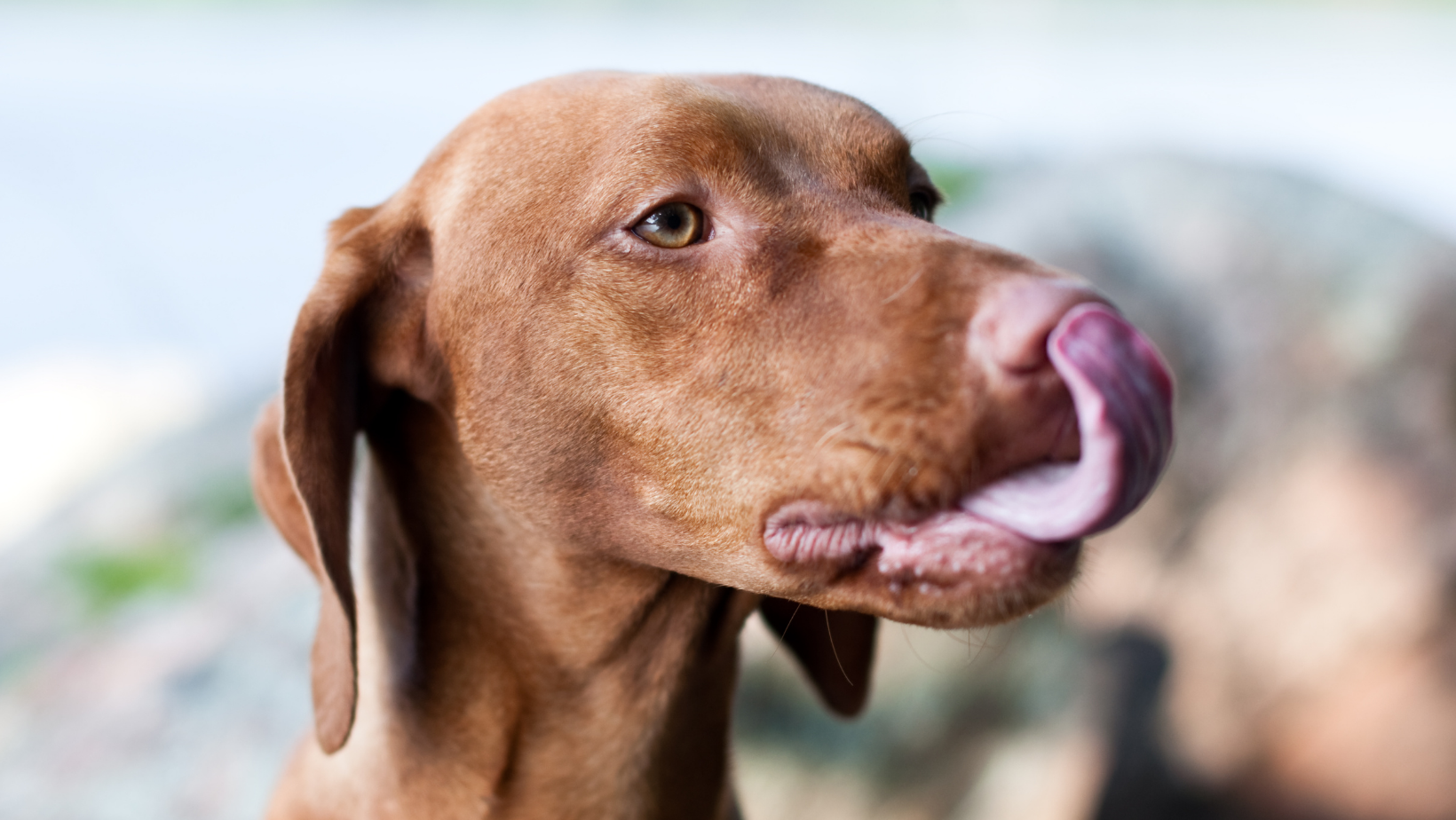
The skin of a dog is prone to discoloration for various reasons. Often, you will observe changes in the skin coat of your dog. It can be due to numerous factors.
The reasons mentioned below are natural and not harmful at all. Sometimes (in some cases only), reversing these changes is possible. But this discoloration of the lips is painless and without any inflammation or other symptoms.
- Discoloration due to hyperpigmentation or hypopigmentation: Sometimes, it’ll go back to normal.
- Inadequate amount of sunlight: It happens because dogs’ bodies stop producing as much melanin in the absence of proper sunlight.
- Seasonal change: It is one of the main reasons as the amount of sunlight varies in different seasons.
On not receiving enough sunlight, a dog’s skin coat and lips color start to get lighter due to a lack of melanin production. - Excessive dehydration or dryness: It can be the other reason for a dog’s lips to turn red.
- Small puppies naturally have pink lips that change as they grow older.
- Due to old age: As dogs grow old, they start losing their pigmentation. This results in discoloration of their lips.
Depigmentation Conditions in Different Breeds of Dogs
Different breeds of dogs are prone to different skin diseases that lead to depigmentation. Some of them are listed below:
- The German shepherd is prone to bacterial infections that attack the eyelids, lips, and nose. This infection results in depigmentation of the skin, lips, eyes, etc.
- Dogs such as Akitas, Siberian huskies, and Samoyeds suffer from a weird syndrome that affects their eyes and, along with them, affects their lips and nose, leading to their discoloration.
- An autoimmune disease in Akitas and Chow Chows mainly affects their skin and causes hardening of the skin and pus formation and inflammation of the skin.
- Siberian Huskies, Alaskan, Labrador Retrievers, and Malamutes are the breeds of dogs that have a seasonal loss of pigmentation in their skin.
- In Rottweilers and Doberman Pinschers breeds, a skin condition arises where symmetrical discoloration of the skin is there, especially the areas of the face that gets discolored (nose and lips mainly)
How to Prevent Discoloration of Lips in Dogs?
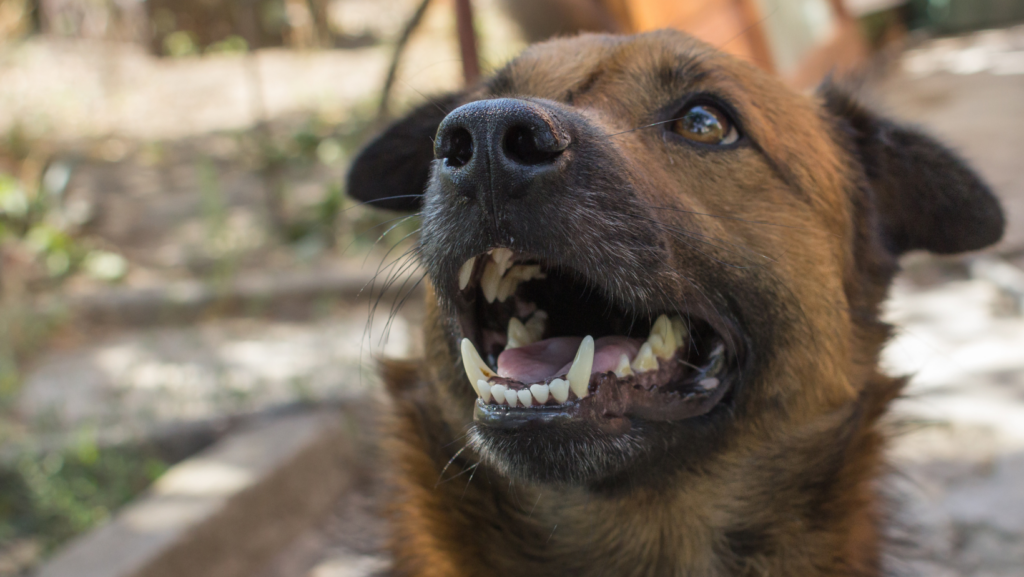
You can’t prevent discoloration of their lips if it is a natural process or observed due to age, as that of a German shepherd. On the other hand, pink discoloration is not always related to the dog’s health unless and until there is inflammation, swelling, or other such symptoms.
Suppose it is due to vitiligo, impetigo, lentigo (dog’s bottom lip turning black), or other such natural conditions. In that case, you can’t prevent it, and it will not cause harm to your dog either, as they are simple cosmetic conditions, but if there’s inflammation on the lips or discoloration along with swelling, then it can be dangerous for the dog’s health.
- To prevent it, take care of your dog’s diet.
- Keep a proper check on your pet’s health.
- Make sure your dog gets cleaned regularly.
- Keep your dog’s gums, teeth, and mouth clean and healthy.
- Whenever you change your dog’s products, keep an eye on their behavior and health. If they start behaving unusually, immediately stop using that product.
Is it Possible for a Dog’s Lips to Regain Their Color?
If the change in lip color is due to a change in seasons, it is most likely that the dog’s lips will regain their color once the season changes.
In some serious conditions, it may not be possible for them to regain their lip colors, but if there is no inflammation and just discoloration, you don’t need to worry as it may not cause any harm to their health.
Discoloration of the lips is a natural process with age in some breeds of dogs. Like in the German shepherd, if you notice their lips and nose turning pink, it is the effect of age, and you should not worry about it.
If the discoloration is due to wounds, cuts, or other reasons, it will regain its color once the wound gets healed.
However, if you see any other problems in your dog, it is suggested that you immediately visit your dog’s veterinarian for proper treatment.
Conclusion
Lip discoloration is easy to treat. You must take proper care of your dog and protect it from various diseases. Maintain a healthy diet for your dog and ensure that their body and mouth are both healthy. Make a weekly or monthly appointment with your dog’s veterinarian.
If there is only discoloration and no inflammation, there is no need to be concerned; otherwise, see a veterinarian as soon as possible if conditions worsen. They will advise you whether the conditions are serious or normal. Only your dog’s veterinarian can provide you with accurate information about his health and other issues.
Meet Madison Phillips, your compassionate guide to pet well-being. With experience from VCA Animal Hospitals and Laxton Vet Clinics Bellaire Inc. Madison honed her skills and embraced the balance of medical expertise and compassion, through her articles, she simplifies pet care, whether you’re a newbie or an experienced pet parent.

